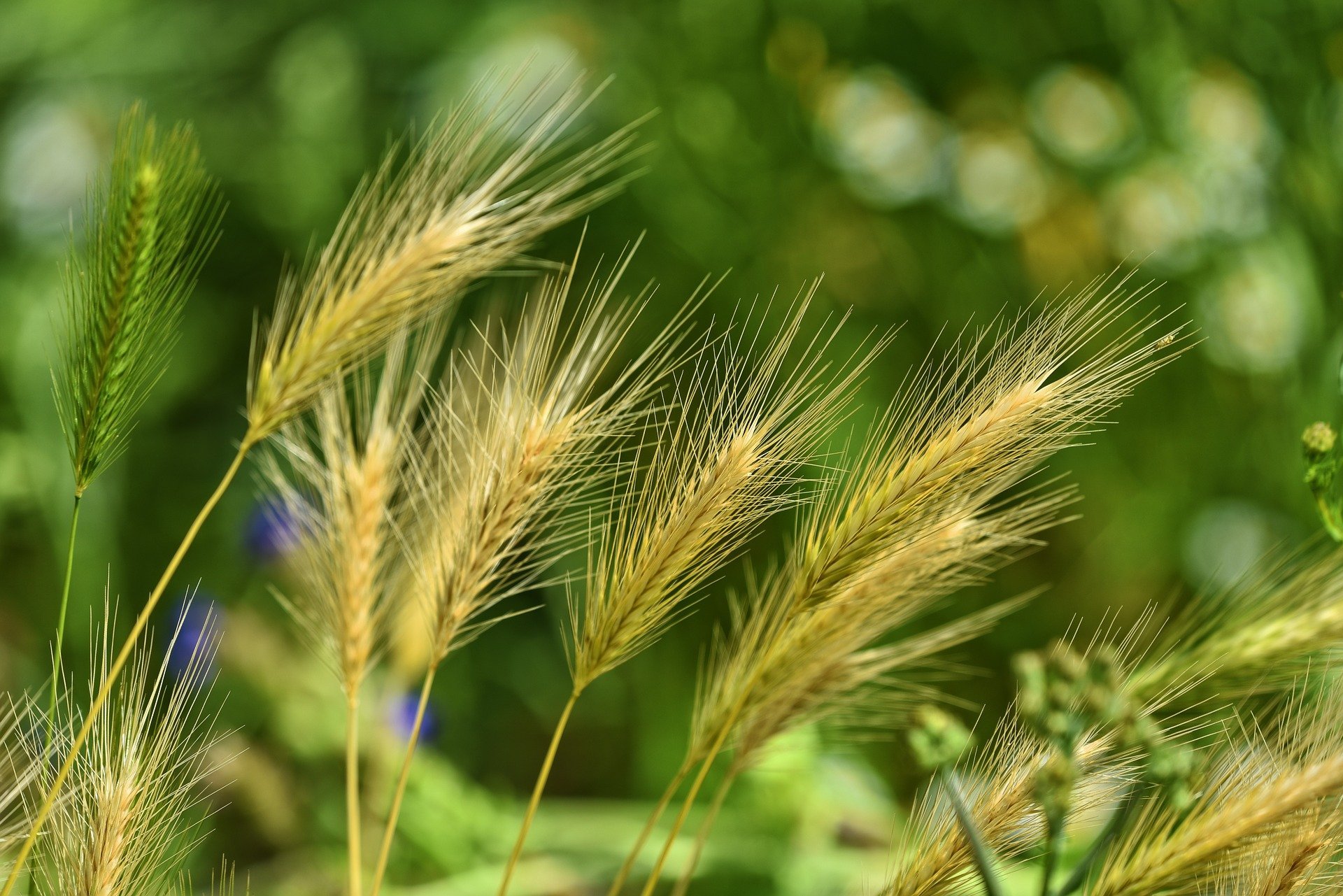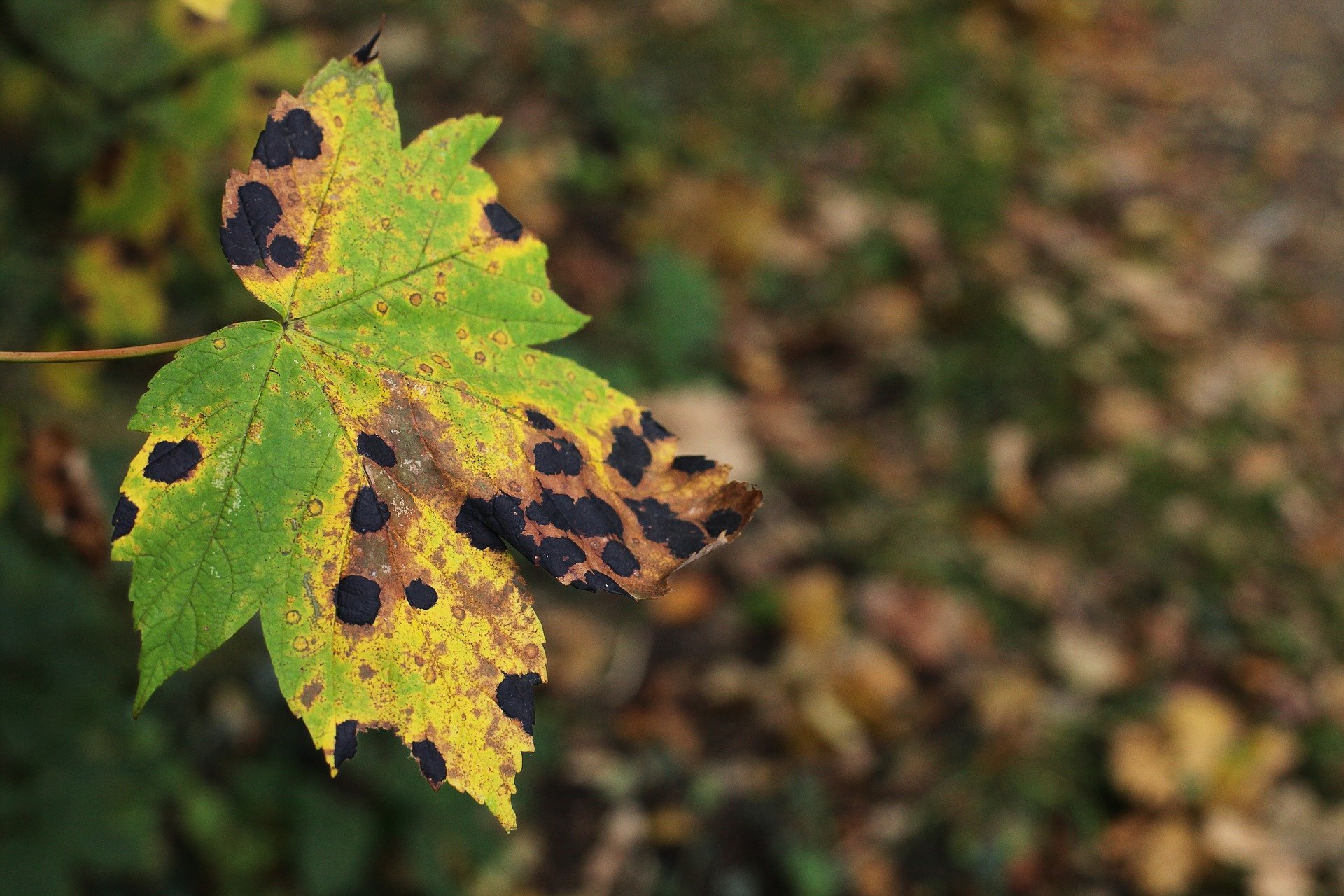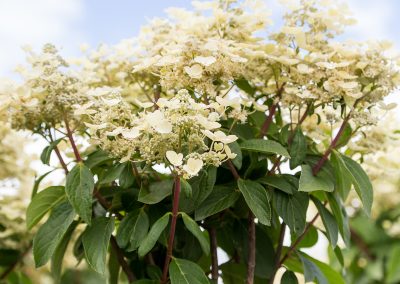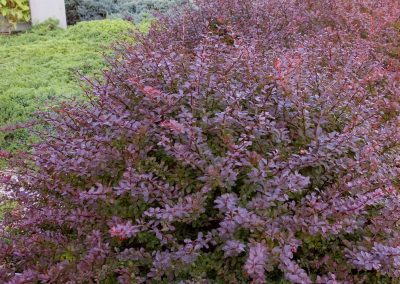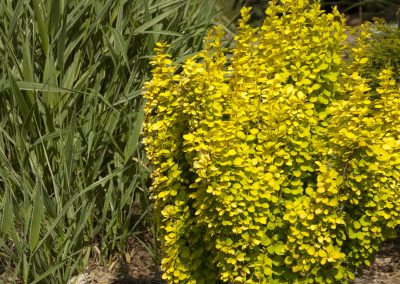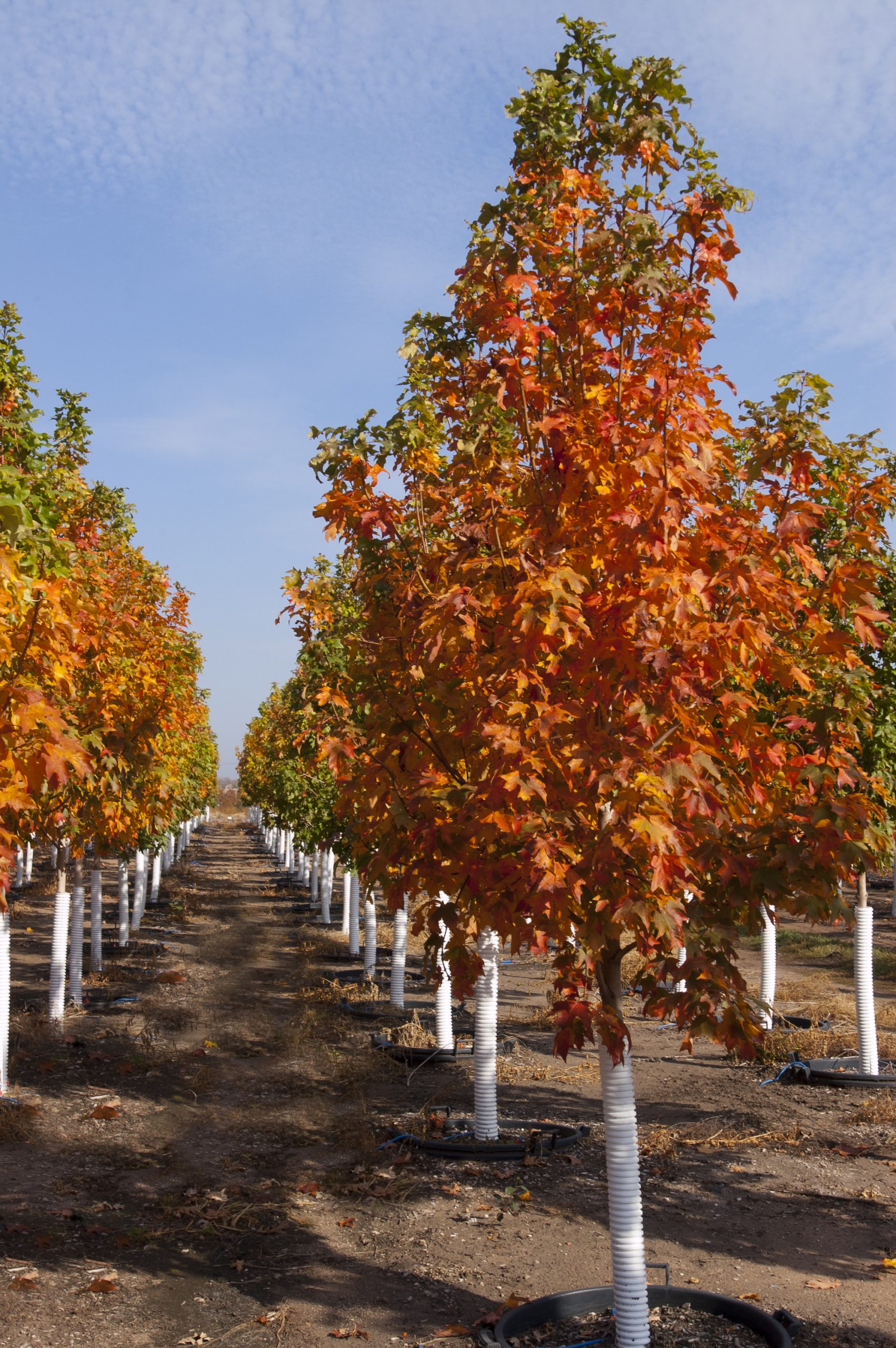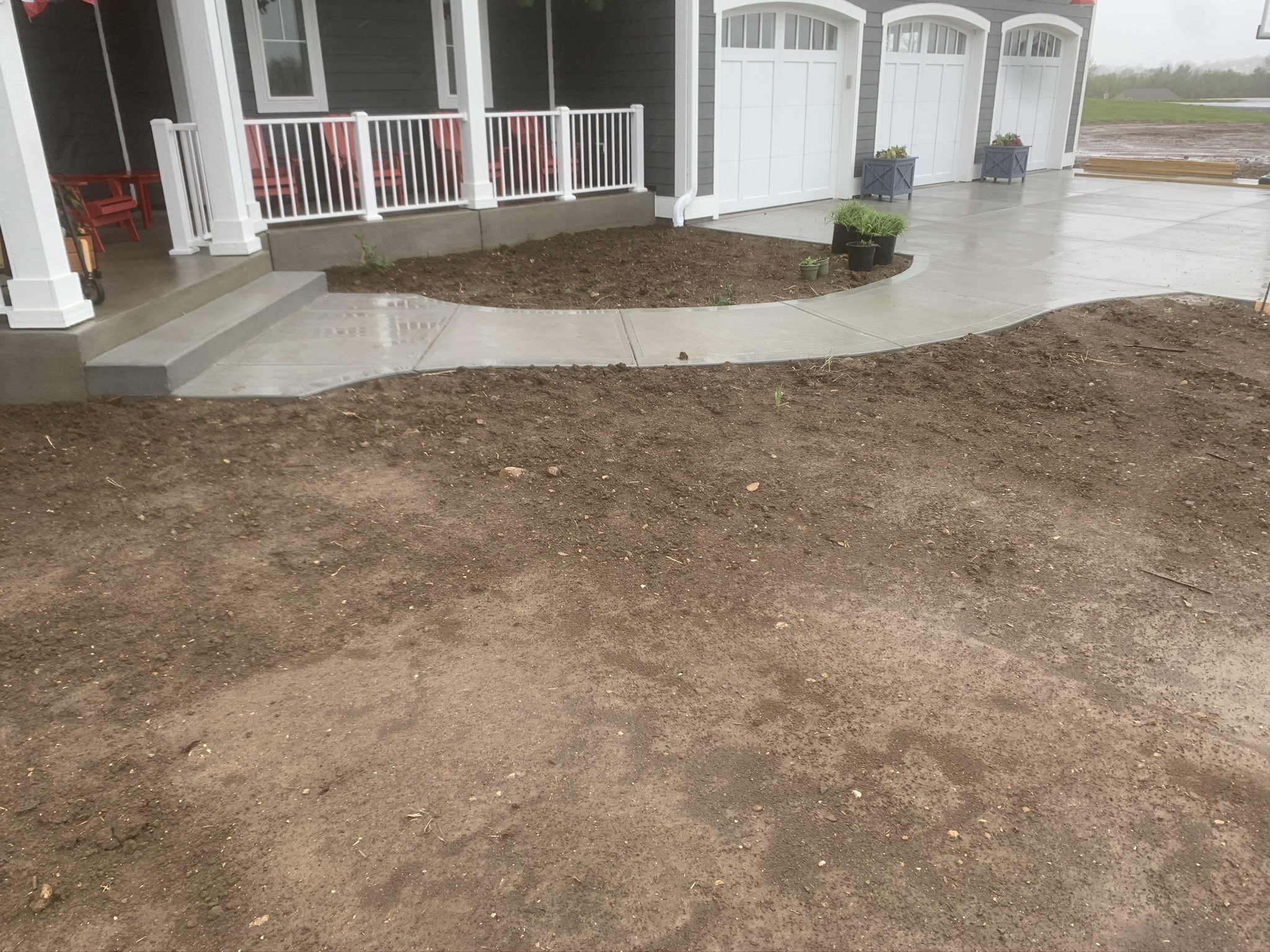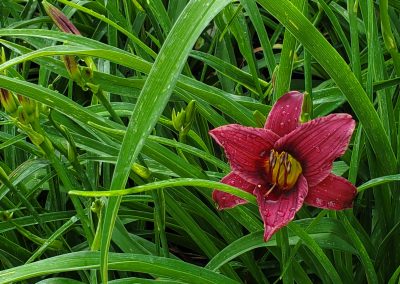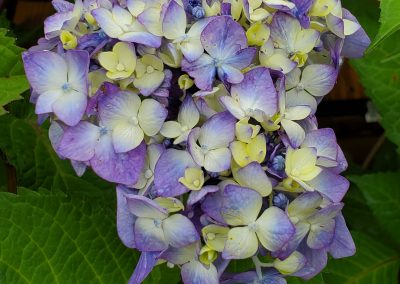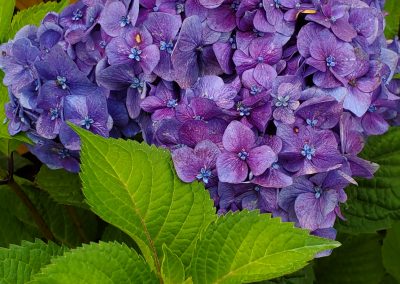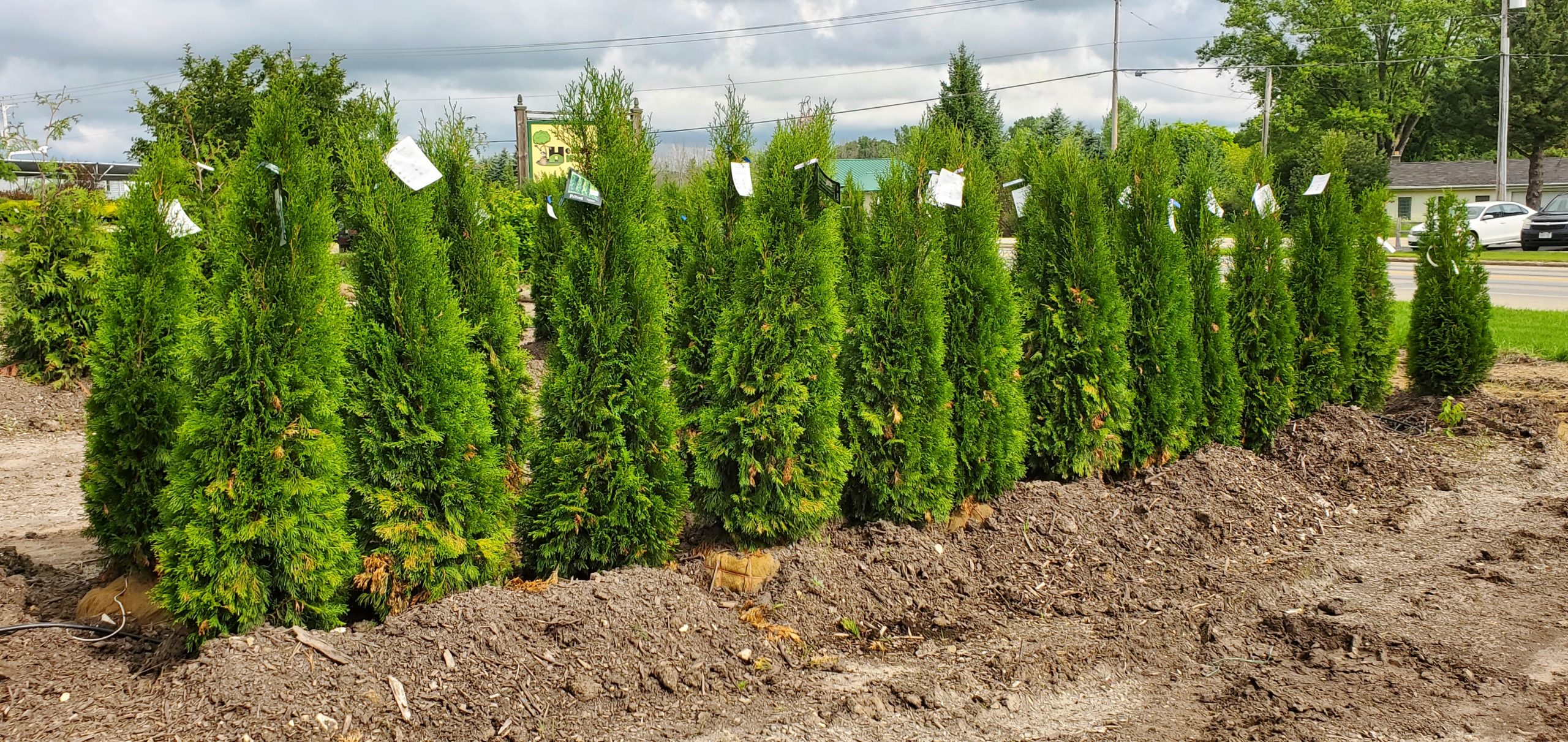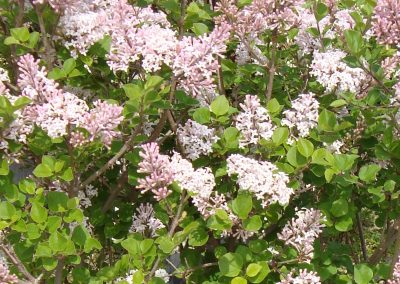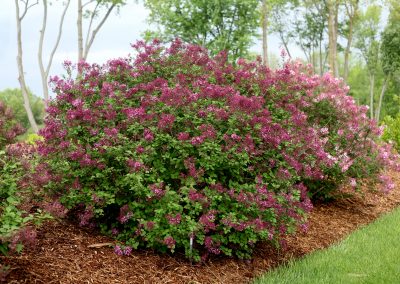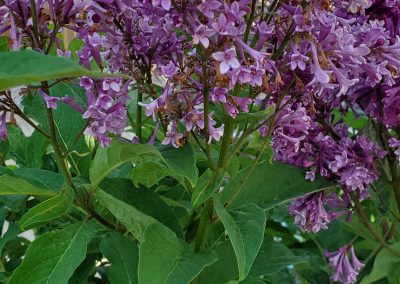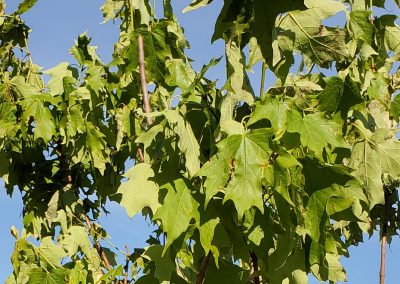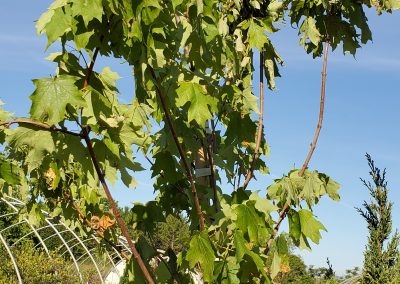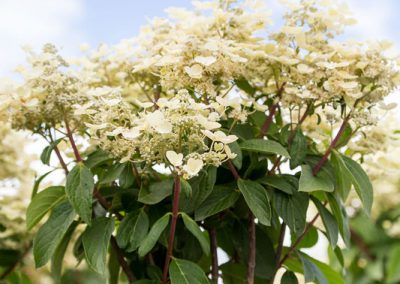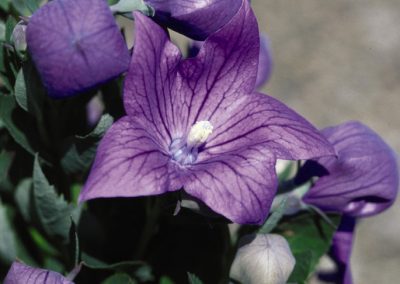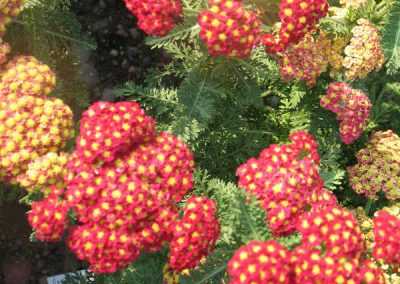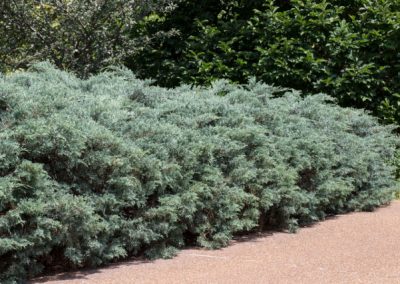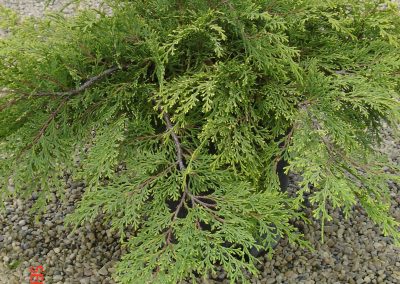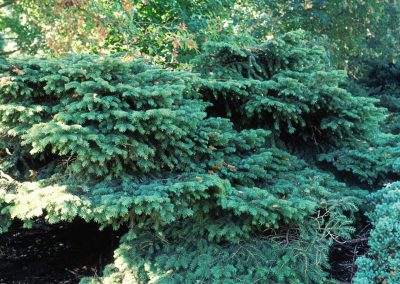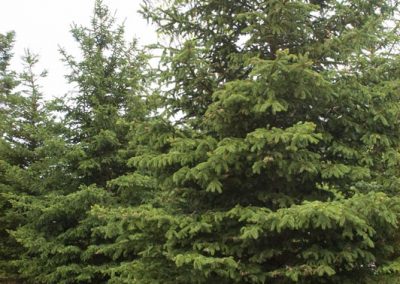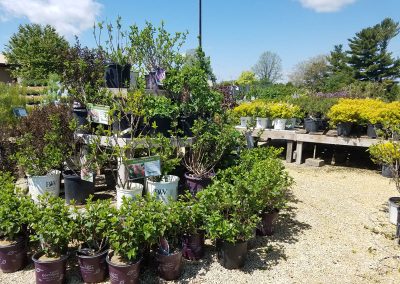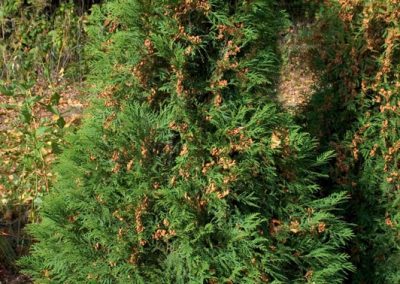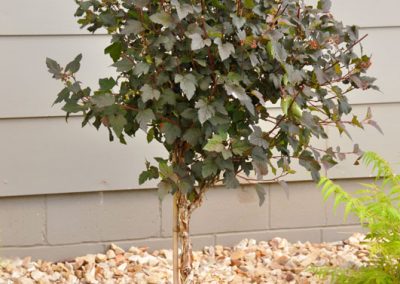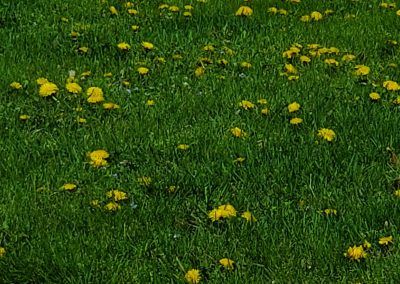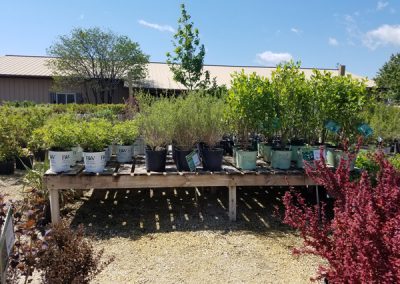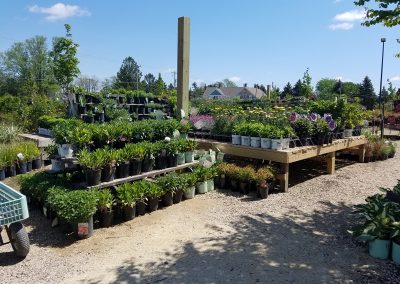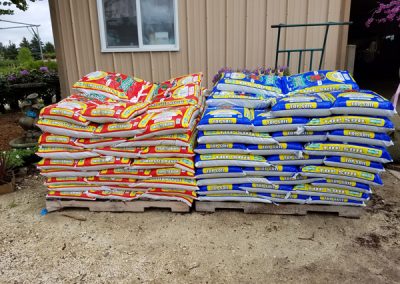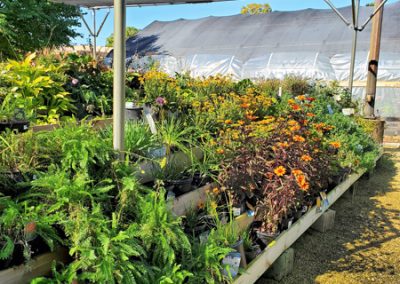
Lawn Care, Perennials - Care, Planting, Seasonal Tips, Shrubs & Bushes
Crisp mornings, cooler temps, brilliant colors and foliage, early morning fog, pumpkins, squash and more. What is that all add up to? Must be Fall.
This to some is truly the most beautiful time of the year. There is something about Fall that makes us feel more at ease and that some of the Spring and Summer pressure is finally off. It is time to take a step back and reflect. It is also time to keep your garden and yard in check so it is well maintained and ready for the long Winter’s nap so it can flourish again next season. Here are some tips for the month of October that you can apply to your own property.
Heritage Hill Nursery can get you and your garden/yard ready to put on that Fall display and get prepared for the Winter season ahead. Check with them for detailed questions you may have.
Perennials
- Get your planting done early as perennials will need time to establish themselves. If you wait until later in the month they could be damaged by the Winter season.
- Keep planting for more hardy perennials as they do well in harsh conditions.
- Lets talk Peonies! Dig up and divide your Peonies after the tops have been killed by the frost. Dig your hole well around the plant to avoid damage underground and cut the clump into smaller pieces leaving at the minimum 3 to 5 eyes per division you have made.
- Prep soil by adding many inches of compost to the top 12 inches of soil then replant the divisions. Make sure you keep the eyes no more than 1 or 2 inches below the surface of the soil.
Shrubs:
- October is a good time for special care for your shrubs.
- Take and rake up your leaves for your compost pile or simply recycle your fallen leaves. They can be a great source of nutrition for your shrubs or your lawn. Shred them up and leave them lay, it is that simple.
- Diseased leaves are another story. however. They should be discarded or buried as they can cause infection to growth or new growth the following season.
- If you have shrubs in planters, take them inside to an unheated garage or on an enclosed porch.
- The use of hay bales is recommended to insulate shrubs that will be left outside during the Winter.
Trees:
- Make sure you are watering evergreens and newly planted trees thoroughly before the ground freezes. This will make Winter damage limited.
- Continue to recycle the leaves into the lawn or spread them out into the garden.
- Winter prep is vital for healthy trees or tree growth next season.
- October is a great time to get things prepared.
- You can also plant trees in October due to the soil being warm and temps are cool.
- And if taken advantage of, the October time on the calendar is perfect for trees to get a good start in the Spring.
Give Heritage Hill Nursery a call to see what they can do for you for preparing your trees or getting new trees in the ground for next season.
Lawns:
- It has been mentioned in previous paragraphs, but we are going to push it now.
- Do not rake up all those leaves! Break out the lawnmower and hit the mulch button and shred those leaves to let them go right back into the lawn. Your lawn will love you for it!
- And if you have an abundance of shredded leaves, spread them out into the garden.
- Again, they are a great source of nutrients for the garden as well.
- Your grass is still growing this time of year also so do not stop cutting. It grows deeper than the top side, but it is still growing.
- Your grass is spreading and developing additional root systems that are deeper and more established in the ground. You may not see it, but your lawn is expending a lot of its energy in October.
[et_bloom_inline optin_id="optin_2"]

Seasonal Tips, Lawn Care, Perennials - Care, Planting, Shrubs & Bushes, Trees - Planting & Care
With the dog days of Summer behind us, the gardens are filled with color, beauty, and habitat.
It won’t be long before that first frost comes so do not forget to take a picture or two just to show off the work you have done and Mother Nature’s amazing beauty.
Some items to check off your list this month may include the following:
- Divide and replant peony roots, but not too deeply.
- Sow snapdragons, cornflowers, and other hardy annuals a couple of weeks before the first frost.
- Remove all weeds from your garden before they go to seed.
- Aerate the lawn between 60-70 degrees.
- Stop planting evergreens by mid-September.
- Keep in mind that early September is the latest to plant any Spring flowering shrubs.
- Also watch for an early frost, cover the garden if one is predicted and keep the gardens watered so the growth is maximized, and it helps protect against frost.
Heritage Hill nursery can help you with your September and early Fall needs for your garden to prepare it for the upcoming season. Check with them for detailed questions you may have.
Perennials
In September, divide your peony’s and replant any roots. Just make sure you do not plant them too deeply.
Other perennials need to be divided also but do not divide mums or asters as they have not bloomed yet.
Keep in mind that in September you should begin to bring any geraniums, begonias, coleus, and caladium indoors.
You can keep adding perennials to your garden this month because the warm soil and cooler air temps are great for planting.
September can be a very productive month for your garden.
Shrubs:
September for shrubs can be a time to be advantageous and plan a lovely Fall color spectrum to your garden or property.
Some shrubs with good color to think about are Barberry, Burning Bush, Viburnum for a red to orange look. Dogwood for purple and Roses or Witch hazel to add a splash of yellow.
Clean out your shrub beds to eliminate unwanted animals’ habitat and possible damage to surrounding plants.
Clean out leaves and remove dead leaves from plants as it will help prevent disease in the next growing season.
Allow your rose blooms to stay on the plants as it aids in Winter protection of the plant.
Hold off on fertilizing any shrubs until the following Spring.
Check out the selection at Heritage Hill Nursery today to add any of those color selections.
Trees:
September is a great time to plant or transplant trees. Cooler temps mean a lot less watering and an easier time for a tree to establish itself.
If you would like to transplant a tree, September is the second-best time to do this. Just wait until the tree is dormant and it has lost its leaves.
Keep in mind, tree moving can be a heavy task, and if you have any larger, special, or expensive trees that you want to be moved call a professional; they have the equipment and the know-how to do it safely and successfully.
A tree may not look too large to move but there is a lot of dirt that has to come with it. That dirt contains the roots which, as you may have guessed, is the important part.
Give Heritage Hill Nursery a call to see what we can do for you if you are looking to plant a new tree. If you need to transplant a bigger existing tree, we can point you in the right direction.
Lawns:
Grass seed anyone? Planting grass seed in September is the best time on the calendar.
You can start a new lawn, fill in bare spots, or just do some renovating on an existing lawn always in September.
With cooler temps and warm soil, it is perfect to speed up the process and have the grass get a good hold before Winter sets in.
Try not to plant grass after September 20th as this is considered late planting and Winter will surely kill it.
You also have time to sod. The great growing conditions speed up the root development of newly laid sod for a lavish lawn next season. Also, keep mowing your grass high in September!
[et_bloom_inline optin_id="optin_2"]
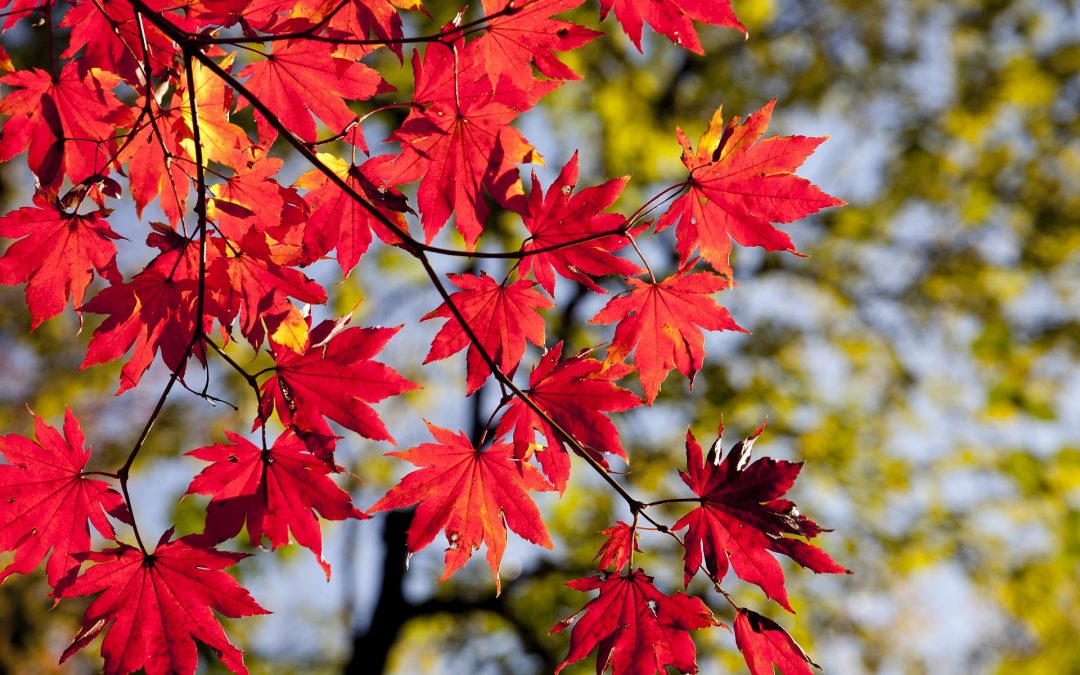
Lawn Care, Perennials - Care, Planting, Seasonal Tips, Shrubs & Bushes, Trees - Planting & Care
The Dog Days Of Summer
Some say that the dog days of Summer are in August. Us here at Heritage Hill would like to think of it as an opportunity to keep your gardens, yards, and landscaping projects moving right along!
Here are some tips to help you get through those dog days and make an impact on your outdoor look.
We continue to keep safety in mind so that you can get this done; and we can help you along the way! The staff here is willing to assist with any of your late Summer needs.
Stop in and visit us at Heritage Hill Nursery in Cedarburg, WI where the latter part of Summer is warming up with helpful hints and sale items.
Perennials
August is a great time to separate perennials in your garden such as Hosta’s, Irises’ and Daylilies. When digging up, make sure you do not damage the root ball of the plant, separate with a small knife or spade and replant in other areas.
Next, get out there and get the weeding done! August is a perfect time to do this because it is the end of the planting season and perennial weeds can produce thousands of seeds that hamper the growing season next Spring and they can be difficult to eliminate. If possible, it is best to get weeding when the soil is moist after a good rain.
Also, in August, plant some new perennials for next season. Perennials such as sedums, peonies, lilies, and hydrangeas get a good grip into the soil in the cool Fall weather and come out shining in the Spring.
You will be glad you did all this when the beauty of Spring bursts out loud and your garden looks fantastic.
Shrubs:
For shrubs we look at August as a great time to plan and plant what kind of shrubbery you want to get started for next year.
A small reminder as to why shrubs are valuable and why get them ready in August are for these reasons.
- They provide landscaping solutions such as privacy, visual interest, and physical separation.
- Many provide fragrance that other plants do not. Take lilacs and how the scent fills the air when properly poised near a patio or open window.
- Shrubs can be a fragrant, uplifting experience in your garden or yard.
So, plan in August to add some for the next season. How about the empty space that somehow just looks like a void that needs “something.”? Well? How about some shrubs to make that spot stand out?
Check out the selection at Heritage Hill Nursery today.
Trees:
Much like shrubs, late August can be a wonderful opportunity to plant new trees.
Many people think that Spring is the only time a tree should be planted. Well, that is not always the case. Spring is a great time for planting trees but late August, which is the beginning of Fall is a great time as well.
Successful planting occurs this time of year if you wait till the leaves have fallen. In Wisconsin, this can happen about this time, unlike other parts of the country.
The roots will continue to grow if the ground has not frozen yet. This lets the tree get a good hold for good growth come Spring.
Lawns:
August is a perfect time to prepare your lawn for the long Winter season. Here we have a few tips for lawns in August.
- Pull weeds out of the lawn if you see them. A couple of weeds here and there will not hurt but that couple can turn to multiple and starve your lawn for water.
- Mow your lawn on the highest setting so the grass does not get burnt out in these hot days.
- Water your lawn 2 or 4 times a week depending on how much rain you get in August.
- Have your lawn aerated to keep moisture flow into the roots of your grass.
- Apply a nitrogen-based fertilizer after the lawn has been watered to help the grass continue to grow.
- Seed in bald spots in your yard in August.
- Let the grass clippings from the mower fall back onto the grass to help feed the lawn.
These tips will help you maintain a healthy lawn and prepare it to survive the harsh Winter and be ready to flourish in the Spring.
[et_bloom_inline optin_id="optin_2"]

Garden Decor, Lawn Care, Perennials - Care, Planting, Seasonal Tips, Shrubs & Bushes, Specials, Trees - Planting & Care
Turn down the heat!
Wow, from Winter to Summer with planting, mowing, and trimming in between. There is no time to take a break with weather changes this quick, but we will take it. We will be shoveling snow before long. So, let us look at some tips for your garden for the month of July.
We understand with some state guidelines still in place that it may be a bit more difficult to get out and get the products you need to get your garden going but with keeping safety in mind, you can get this done and we can help you along with your project. Our staff can provide information and designs to get your project moved along in the heated part of the season and show how to maintain all the work that you accomplished in the Spring.
Stop in and visit us at Heritage Hill Nursery in Cedarburg, WI where the plants are growing, and the staff is eager to help you out.
Perennials
Some tips we would like to share with you involve perennials and what you should try to do with them come July.
How To Prune Your Perennials For The Summer Season
Flowers, plants, trees have all had a good Spring to get stabilized and now we enter part of the season that can prove to be brutal if the temperatures and moisture do not cooperate. What you should do with your perennials is to remove the dead flowers!
As flowers fade you should get out and remove them as soon as you can. While doing this, remove both flower and stem. Some plants produce a stalk that is separate from the rest of the foliage. That stalk should be removed as well.
Cut the perennial back to unopened buds or cut back to a good set of leaves.
You should also shear the plant anywhere from 25 to 50%. Also, look at the perennial and selectively remove any tired foliage. This helps your perennial to flourish without carrying so-called “dead weight” through the hot season.
Shrubs
Bushes or shrubs that flower in the Summer bloom on growth that is coming from the present growing season. These bushes or shrubs should not be pruned in the Summer before blooming has begun because this would remove the buds that are just about ready to bloom.
You should always prune these types of bushes or shrubs in the Spring before any new growth begins or during the Winter season. But for the month of July, the heart of the Summer season, let them be, no pruning required at this time.
Trees
Here are some tips on how to maintain your trees in the heat of Summer.
Help keep trees cool. How? Well, pay attention to what landscape materials you use under a tree. For example, hard materials such as rock or decomposed granite can cause heat to reflect or radiate which in turn puts undue stress on a healthy tree.
How about paying attention to what your tree is telling you. If leaves fall off during July your tree may be telling you that it is reacting to soil compaction, saturated soil, you’ve planted a shade loving tree in the sun (or vise verses) or you are simply experiencing drought conditions and it needs water.
And if you must prune in July, keep it to a minimum. Dead branches or branches that may be able to cause damage to your home or other structure should be trimmed out, including broken ones. However, try not to do any major pruning of trees until late Fall or Winter.
Lawns
For lawn care in July, continue to mow the lawn as needed. Make sure the lawn gets about an inch of water per week. Mulch clippings to aid in cooling and feeding your lawn. Edge planting beds for a clean look.
If you are inclined, maybe plant some warm-season grasses and make sure you keep them watered. Stop fertilizing your lawn in mid-Summer as this could burn the grass out. And make sure your lawnmower or tractor blades are kept sharp to make a clean cut and a great looking lawn. With these simple tips your lawn will look great into the Fall season.
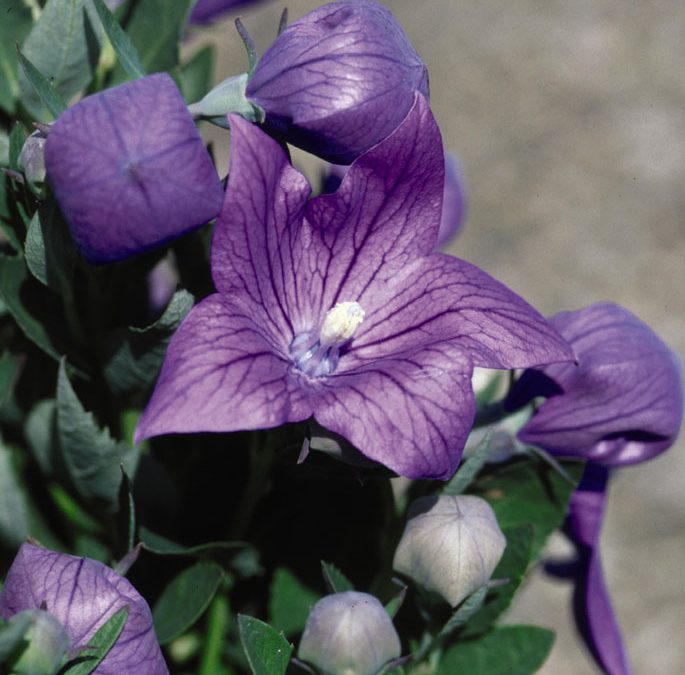
Perennials - Care, Planting, Lawn Care, Seasonal Tips, Shrubs & Bushes, Trees - Planting & Care
Just when you think Winter is never going to let us out of its grip, the sun appears, the ground thaws, the snow quits falling (we hope) and we look at the calendar and it is June. Well, it is that time of year again and we want to see if you are prepared for the growing season.
We know that with challenging times and stay at home orders it may be a bit more difficult to get out and get the products you need to get your garden going but with keeping safety in mind, you can get this done and we can help you along with your project.
We have a wonderfully trained staff that can provide information and designs to get your gardening project headed in the right direction. Stop in and visit us at Heritage Hill Nursery in Cedarburg, WI where the plants are growing, and the staff is eager to help you out.
Perennials
We would like to share with you 4 perennials that could help boost your garden and make it a delight to work on this season. These will be familiar to most but new to some. Let us look:
- Columbine: This is a plant grows well in zones 4 and 5. It has a lovely bloom that produces a sweet smell that really attracts Hummingbirds and Butterflies. Full sun and well-drained soil are their preference and their blooms can be seen usually from April to May.
- Yarrow: Sandy soil, full sun and very warm temperatures are this plant forte. If you are in areas that are prone to droughts then the Yarrow will have no problems with this. If you like a plant that spreads quickly and makes an impact then this may be something you want.
- Balloon Flower: This beautiful purple bloom puffs out before it opens. It can do well in the Wisconsin area, which is zone 4 and 5, and it grows 18 inches to 24 inches tall. You may want to stake this plant, so it stands up straight and tall. When doing that it is a delight and charm to view.
- Aster: Are you still looking for more Butterflies? Or maybe other pollinators that can help the garden grow? How about this? In slightly moist soil and with some extra care, the Aster could grow as tall as 6 or 8 feet. It likes any type of light so that is not an issue. Maybe this is your choice.
Shrubs:
I remember being in school and when June was mentioned it meant one thing. The beginning of Summer vacation. As you know in the gardening world that is not the case. We are still technically in Spring and planting season is thriving. This is still a good time to add mulch to bases of shrubs for landscaping purposes. Chewing up soil with shovels and rakes is greatly beneficial to where the shrubs are planted. When replacing mulch around shrubs, be careful not to mound it up around the trunk and create a “volcano” effect. This could harm or even kill the shrubs.
Trees:
June is still a good time for planting trees that will give you pleasure for many years to come. People are very much into the “decorative” or “ornamental” trees instead of simply basic ones such as Oak, Pine or Maple. Here are some particularly good and popular trees for your decorative garden:
Evergreens include Spruces, Pines, and Arborvitaes.
Ornamentals include Weeping Cherry, Flowering Crabapple, Hydrangea Tree Form (TF), Lilac (TF), Ninebark (TF), Eastern Redbud, Japanese Maples and Magnolias.
These are great examples of smaller more decorative trees. Check with Heritage Hill Nursery to see if we have them in stock or may be able to order one for you.
Lawns:
Some think that one application of lawn fertilizer is enough but that is not necessarily the case. Applying a late spring fertilizer once between April and June 6 to 8 weeks after the early spring feeding is recommended. This will help your lawn grow strong roots while killing dandelion, clover, and other listed weeds. Also, keep that tip in mind from last month about changing patterns when mowing the lawn. It really does keep wear patterns from forming and makes for a more attractive lawn after you have mowed it.

Garden Decor, Lawn Care, Perennials - Care, Planting, Seasonal Tips, Shrubs & Bushes, Trees - Planting & Care
With so many new varieties of plants out there, it’s hard not to impulse buy. However, it’s important to remember that some plants will give short-term color while others will add interesting appeal throughout the season. Take the time to research a prospect before making that purchase. Not all areas of your yard will be able to accommodate the plants that you may want. As silly as it may seem, on the next sunny day, take note of how much sun each area of your property receives.
Another thing to consider is the amount of wind exposure. Thus, doing a little research now and knowing beforehand can save you money and headaches down the road.
Don’t have that artistic skill? Stop in at Heritage Hill Nursery Inc. and see what our design team can do for you.
Perennials
Plants purchased at Heritage Hill Nursery, Inc. can stay in the containers they are purchased in. However, it’s important to water each pot thoroughly until the water visibly runs from the bottom; repeat this step every day until planted.
When ready to plant, use a 50/50 mixture of existing soil amended with a good planting soil (HHN sells planting soil by the bag). Hold off fertilizing for a year because they typically will have already been fertilized. Existing perennials, however, can benefit from either slow-release or liquid or organic fertilizers (all of which can be found at HHN). Once the plant is in the ground, you will need to water daily. Watering in the morning helps prevent wilting in the afternoon and allows the plant to thoroughly dry before nightfall. Sometimes it may be necessary to water twice a day if it’s really hot outside. Moisture probes are inexpensive and usually accurate ways to check when watering is needed.
- Bring out the peony cages and other plant supports and position them around the plants that will become top-heavy.
- Guiding new stems into the squares is easier than trying to carefully squeeze big flower heads into them later.
- Newly purchased perennials are usually safe to plant this month. Although, if the temps have been unseasonably low, wait another week.
- Place the pots outside during the day and bring them into the garage or into another protective environment at night.
Shrubs
Sprinkle a slow-release fertilizer (Heritage Hill Nursery, Inc. offers a vast selection of organic and regular fertilizer) around the base of the plant. Proactive measures against damaging insects and fungus should be taken early in the month before a problem arises. A brand that has worked well at the nursery is called, Bonide Systemic Insect Control and Bonide Infuse Systemic Disease Control.
Both of these products are liquid concentrate that can be safely mixed together and used on a wide range of plants. Since these products are both a systemic, the liquid is absorbed into the plant, so you can water plants freely without washing off the product.
Trees
Hold off on fertilizing trees that were purchased at Heritage Hill Nursery, Inc. last season as they were treated with a two-year slow-release fertilizer. If you are going to fertilize established trees, we recommend using Nutri-Pak (3 yr. slow release) as its safer for the environment, easy to use, and cost-efficient; it can be found at HHN.
Be on the lookout for tent caterpillars later this month. Not only are the large, pulsating masses unsightly, but these insects can also do damage to new foliage.
Before the caterpillars emerge, either uses a systemic insecticide spray, or you can prune the tent out of the tree and submerge it into a bucket of soapy water. Heritage Hill Nursery, Inc. used Bonide Systemic Insect Control because it absorbs into the plant and won’t wash off.
Lawns
Take proactive measures against crab grass towards the end of April/early May by applying a pre-emergent herbicide. However, new grass seedlings will also be killed. Due to this, it’s extremely important to not apply a pre-emergent now if you’re planning on seeding your lawn later in spring.
When the ground is dry, rake out or thatch any dead grass. Mowing shouldn’t begin until the grass reaches at least 2.5”, better if the grass reaches 3-3.5.” Furthermore, longer grass results in deeper root systems that have a better chance at warding off disease.
To achieve an even healthier lawn, first mow by cutting left to right. When it’s that time to mow again, now mow the lawn up and down in rows. Keep using this rotation throughout the season as it will help prevent unwanted wear patterns from developing.

